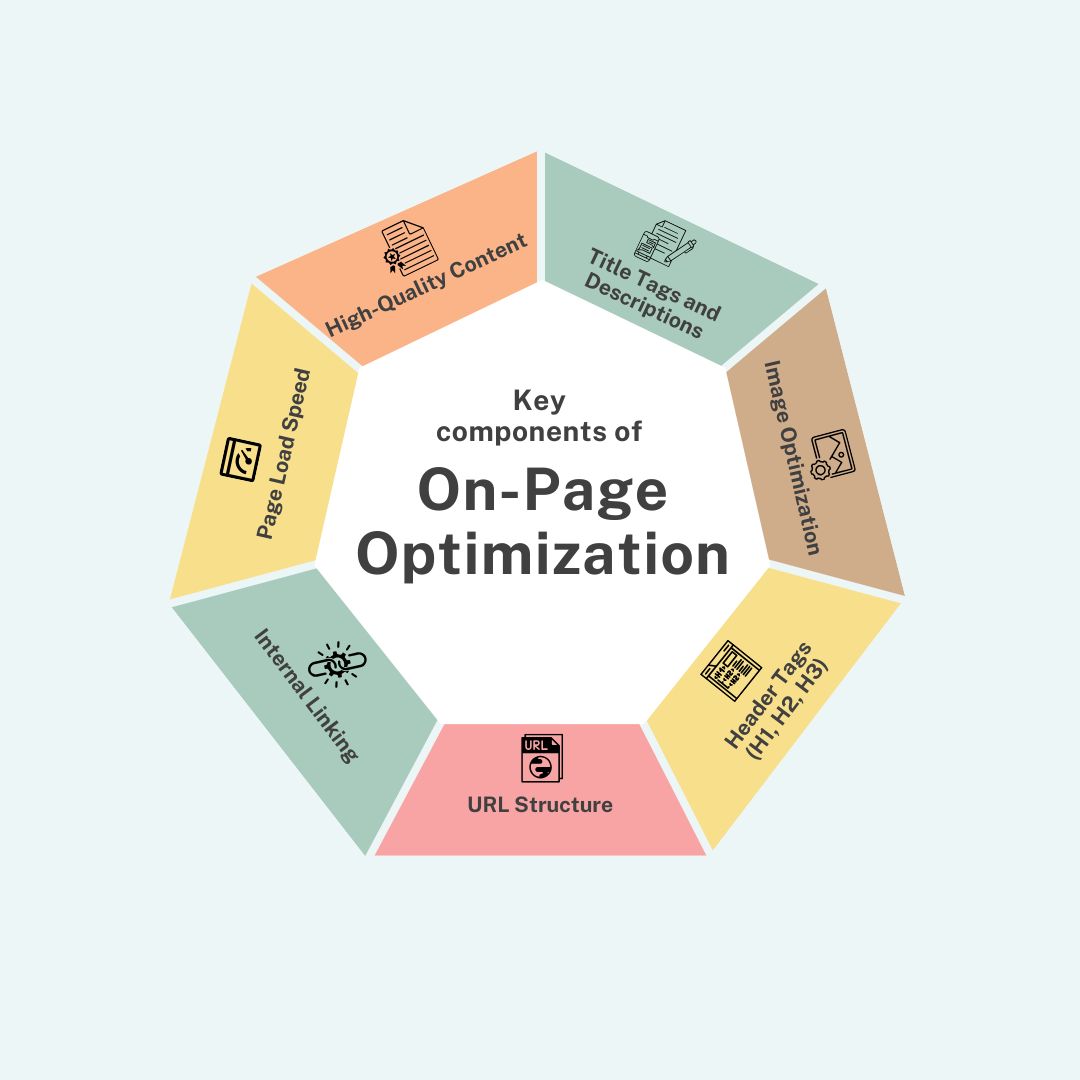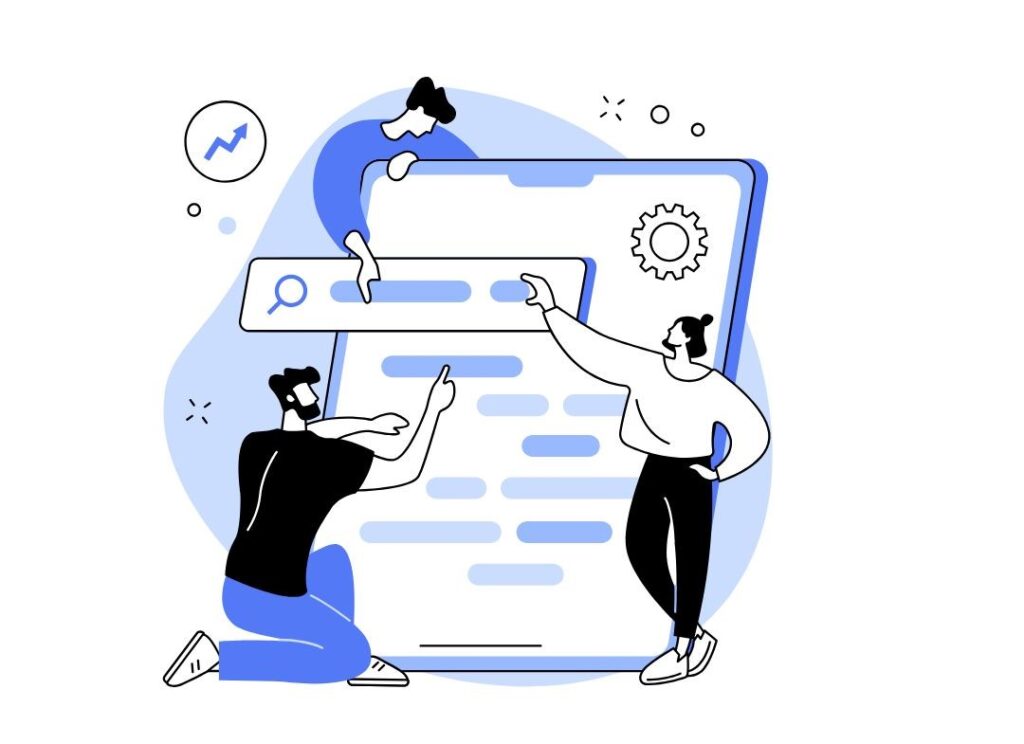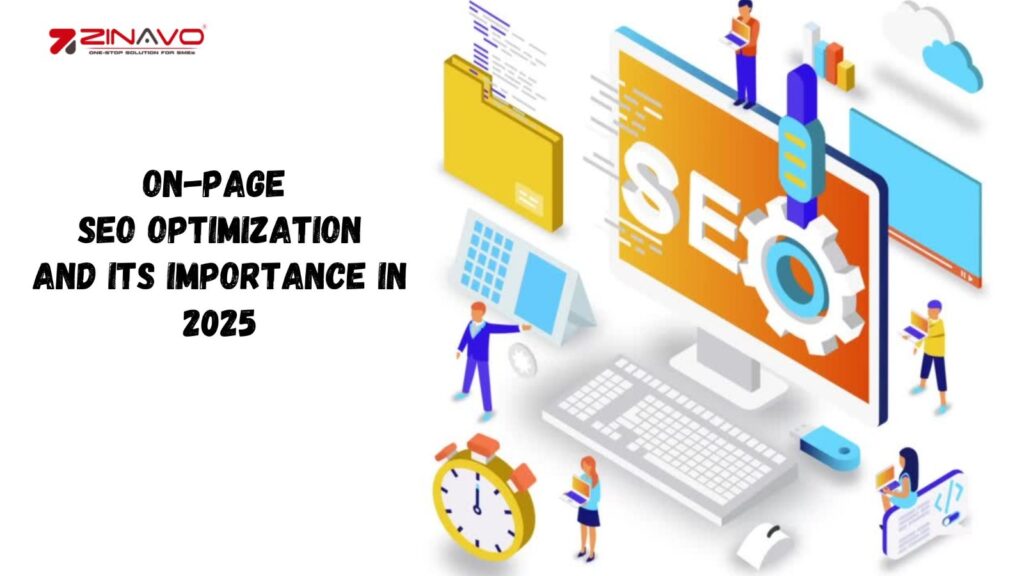On-Page SEO Optimization and Its Importance in 2025
Introduction
Optimizing on-page SEO is the foundation of a sustainable online presence. It’s not just about adding keywords or creating content, you need to create a website that search engines and users both understand.
A well-executed on-page SEO strategy is an integral part of a comprehensive digital marketing plan. When combined with organic and paid search, content marketing, and conversion rate optimization, it helps businesses strengthen their online visibility and effectively reach their target audience.
By optimizing key elements such as content, structure, and technical aspects, on-page SEO services ensures that your website is properly indexed and ranks well in search engine results. This not only makes your site more discoverable but also enhances user experience, driving engagement and building trust.
Ultimately, on-page SEO is essential for boosting website visibility, attracting quality traffic, and generating leads.
We will discuss how On Page Optimization can increase a business by bringing more traffic to the site.
What is On-Page SEO Optimization?
On-page SEO Optimization refers to the techniques used to optimize individual web pages to improve their rankings in search engines. It ensures that every aspect of your webpage aligns with both user expectations and search engine requirements.
Unlike off-page SEO, which involves external factors like backlinks, on-page SEO focuses solely on what’s within your control — the content and HTML source code of a page.
Key components of On-Page Optimization
To achieve a higher rank for your website, various factors need careful attention. Below are the essential components to focus on for effective on-page optimization:

1. High-Quality Content
Content is the foundation of on-page optimization. Engaging, informative, and well-structured content ensures that search engines and users notice your website. Addressing visitors’ questions or concerns with valuable content increases your chances of ranking higher in search engine result page.
To optimize your content effectively:
- Use relevant keywords strategically throughout the text.
- Keep your material clear, concise, and easy to understand.
- Ensure your content is original and unique to stand out from competitors.
- Focus on creating long-form content that thoroughly covers a topic while avoiding unnecessary fluff.
Search engines reward user-focused, helpful content with better visibility and rankings.
Step 3: Discover New Keywords
On-page optimization begins with title tags and meta descriptions. These HTML elements help both users and search engines understand the content of your pages before they even visit.
- Title Tags: Clickable headlines displayed on search engine results pages (SERPs). Your title tag should be concise, informative, and include your target keyword to set clear expectations for visitors.
- Meta Descriptions: Short snippets (about 150–160 characters) that summarize the page content. Use compelling language and include the main keyword to attract clicks.
Optimized titles and descriptions enhance your website’s appeal to both search engines and potential visitors.
3. Header Tags (H1, H2, H3)
Using header tags will make your content more readable for both users and search engines. These tags also provide signals about content hierarchy and relevance.
- H1 Tags: Serve as the main title of the page, representing its primary focus. Include your core or seed keyword for better optimization.
- H2 and H3 Tags: Subheadings that break the content into digestible sections, improving readability. Insert relevant keywords where appropriate.
Well-organized header tags create a user-friendly layout and enhance search engine rankings.
4. URL Structure
A clean and concise URL structure improves both user experience and search engine understanding of your page’s content.
To optimize your URLs:
- Keep them short and descriptive.
- Use hyphens to separate words for clarity.
- Include your primary keyword, if possible.
Optimized URLs provide a seamless navigation experience and contribute to better rankings.
5. Internal Linking
Internal linking connects related pages on your website, making it easier for search engines to crawl and index your content. It also enhances user experience by directing visitors to valuable, related pages.
Best practices for internal linking:
- Make sure the anchor text describes the linked page accurately and contains keywords.
- Boost rankings by linking to relevant internal pages.
- Ensure internal linking is logical and user-friendly.
A strong internal linking strategy strengthens your website’s structure and helps retain visitors longer.
6. Image Optimization
Images play an important role in enhancing user experience and SEO. However, unoptimized images can slow down page load times, negatively affecting your rankings.
Optimize your images by:
- It is important to use descriptive file names and alt texts that contain relevant keywords.
- Reducing the size of images and improving the loading time by compressing them.
- Using responsive images that adjust seamlessly across devices.
Proper image optimization boosts your SEO while providing a superior user experience.
7. Mobile-Friendly Design
In today’s mobile-driven world, mobile compatibility is essential. Responsive design, usability, and fast load speeds are critical for ensuring a seamless experience across smartphones, tablets, and desktops.
As Google prioritizes mobile-friendly websites in its search results, staying competitive requires mobile optimization.
8. Page Load Speed
User satisfaction and SEO rankings depend on fast-loading websites. A slow website leads to a higher bounce rate and lower search engine rankings.
Improve your page load speed by:
- Compressing large files, such as images and videos.
- Minimizing code and reducing server response times.
- Leveraging browser caching to store frequently used resources.
Optimizing page load speed enhances the overall user experience and improves search engine performance.

The Importance of On-Page SEO Optimization in 2025
On-page SEO optimization in 2025 remains a cornerstone of digital success, playing a vital role in achieving high search engine rankings and fostering business growth. As search algorithms become more sophisticated, optimizing every webpage has become essential for increasing visibility, attracting organic traffic, and creating a seamless user experience.
A well-optimized website not only helps you stand out in a competitive online landscape but also builds trust and credibility with your audience. In an era where user experience is paramount, factors like high-quality content, fast page loading speeds, mobile responsiveness, and structured data are crucial for retaining visitors and converting them into loyal customers.
On-page SEO also ensures your website attracts highly relevant traffic, leading to improved engagement, increased leads, and higher revenue. By focusing on critical elements such as title tags, meta descriptions, header tags, and internal linking, businesses can align their online presence with both user intent and search engine requirements.
As the digital landscape continues to evolve in 2025, on-page SEO optimization remains a strategic necessity for achieving long-term success. It empowers businesses to adapt, grow, and maintain a strong foothold in the ever-changing world of search and user expectations.
Conclusion
On-page SEO optimization is key for enhancing your online presence. It ensures your website meets the expectations of both search engines and users. By focusing on content quality, technical enhancements, and user experience, you can significantly improve rankings, attract more visitors, and ultimately drive conversions.
Start optimizing today to unlock your website’s true potential!
Frequently Asked Questions
Google Search Console for performance insights.
SEMRush for keyword and content analysis.
Yoast SEO or Rank Math for WordPress optimizations.
PageSpeed Insights for page speed improvements.
Screaming Frog for technical SEO audits.
These tools help streamline the optimization process and provide actionable insights to enhance website performance.
Keyword stuffing, which can lead to penalties.
Ignoring mobile optimization.
Overlooking internal linking opportunities.
Failing to provide high-quality, unique content.
Not optimizing images with alt text and compression.



